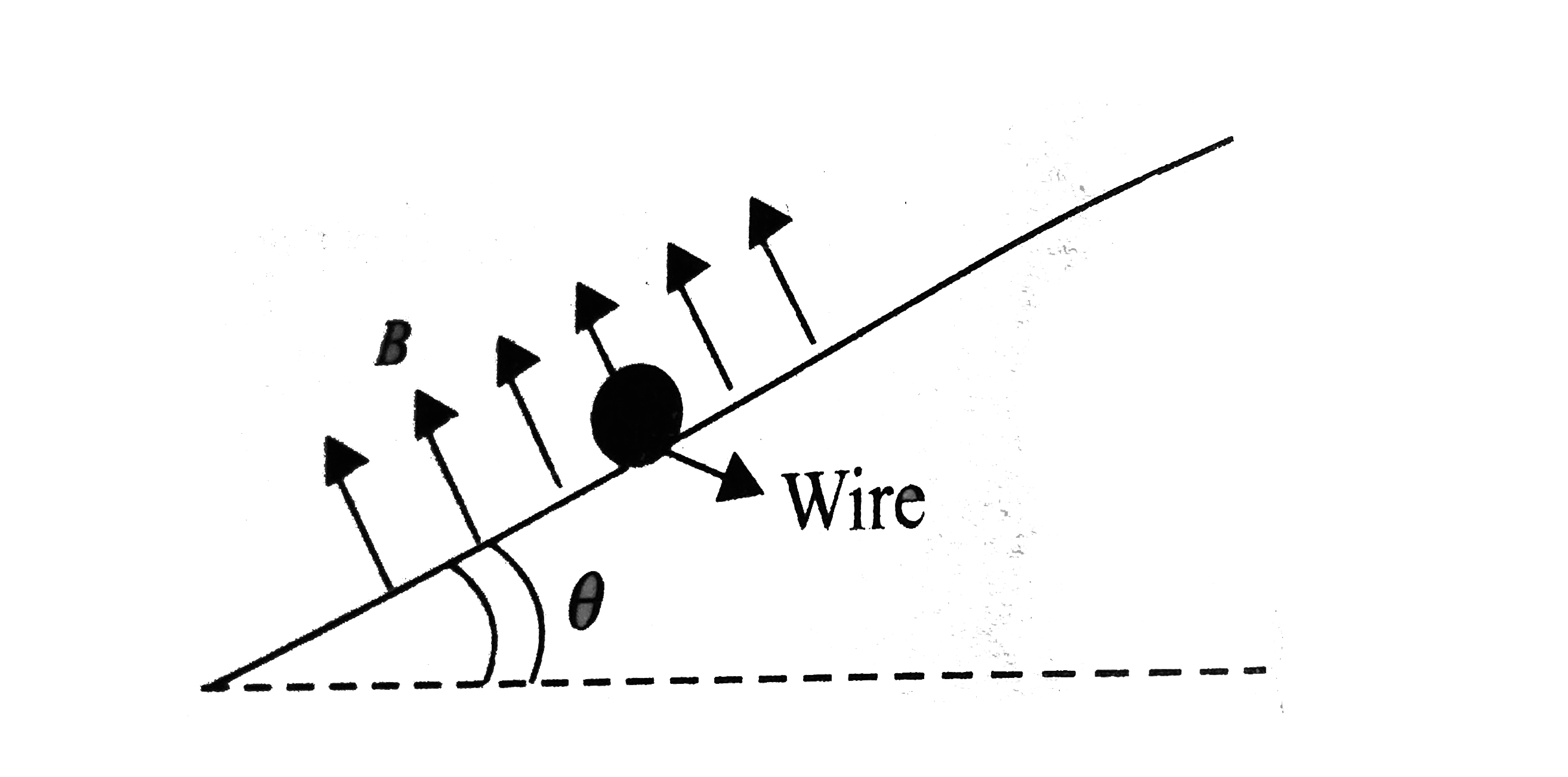A wire of mass m and length l is placed on a smooth incline making an angle θ with the horizontal, whose front view is shown in Fig. When a finite amount of charge is passed through it in an infinitesimal time, the wire immediately acquires some velocity and then ascends the incline by a distance s. For this small duration, we can neglect the gravitational force because the current can be considered very large due to small time duration. The amount of charge passed through the wire is

m√2gssinθBl
mvBl
m√2gssinθBlcosθ
information insufficient
The correct Answer is:(a,b)
When a charge is passed through a wire, a current flows in the wire (for a very small time). As a result of this, the wire experiences a magnetic force for a very small duration, i.e., during the time for which charge has been passed through the wire, due to which it acquires some velocity, then onwards, it moves under gravity. For the wire to move up the incline, the positive charge has to pass through the wire in a direction coinciding with into the plane of paper.
Fm=IBl=dqdt×Bl=ma
[For this small duration dt, we can neglect gravitational force because I would be very large due to small passage time of charge.]
⇒mdvdt=dqdt×Bl⇒mdv=dq×Bl
⇒mv=q×Bl
⇒v=q×Blm⇒q=mvBl
where q is the charge passed through the wire and v is the velocity aquired by the wire just after charge had been passed through it.
From kinamatics, v2=2gsinθs
q=m√2gssinθBl

Topper's Solved these Questions
- MAGNETIC FIELD AND MAGNETIC FORCESBOOK - CENGAGE PHYSICSCHAPTER - MAGNETIC FIELD AND MAGNETIC FORCESEXERCISE - Exercises Assertion -reasoning
8 Videos
- MAGNETIC FIELD AND MAGNETIC FORCESBOOK - CENGAGE PHYSICSCHAPTER - MAGNETIC FIELD AND MAGNETIC FORCESEXERCISE - Exercises Linked Comprehension
28 Videos
- MAGNETIC FIELD AND MAGNETIC FORCESBOOK - CENGAGE PHYSICSCHAPTER - MAGNETIC FIELD AND MAGNETIC FORCESEXERCISE - Exercises Single Correct
70 Videos
- KINETIC THEORYBOOK - CENGAGE PHYSICSCHAPTER - KINETIC THEORYEXERCISE - Question Bank
31 Videos
- Magnetism and MatterBOOK - CENGAGE PHYSICSCHAPTER - Magnetism and MatterEXERCISE - Question Bank
50 Videos
Similar Questions
A heavy block of length b and height h is placed at rest on a rough inclined plane of inclination θ with the horizontal, as shown in figure.

View SolutionConsider a container having an inclined wall, inclined an angle θ with horizontal as shown in Fig. Calculate the force per unit width on the wall.

View Solution
Knowledge Check
A block of mass m is placed on a smooth inclined plane of inclination θ with the horizontal. The force exerted by the plane on the block has a magnitude
AmgBmgcosθCmgcosθDmgtanθA solid cylinder of mass m rolls without slipping down an inclined plane making an angle θ with the horizontal. The frictional force between the cylinder and the incline is
AmgsinθBmgsinθ3CmgcosθD2mgsinθ3A body of mass 10kg is placed on a smooth inclined plane making an angle of 30∘ with the horizontal, the component of the force of gravity trying to move the body down the inclined plane is [g=9.8m/s2]
A98 NB49 NC10 ND5 N
A block can slide on a smooth inclined plane of inclination θ kept on the floor of a lift. When the lift is descending with a retardation a , the acceleration of the block relative to the incline is
View SolutionA smooth inclined plane is inclined at an angle θ with the horizontal. A body starts from rest and slides down the inclined surface. The time taken by the body to reach the bottom is

View SolutionThe temperature of a metal wire rises when an electric current passes through it because :
View SolutionA trolley containing a liquid slides down a smooth inclined plane of angle α with the horizontal. Find the angle of inclination θ of the free surface with the horizontal.

View SolutionA trolley containing a liquid slides down a smooth inclined plane of angle α with the horizontal. Find the angle of inclination θ of the free surface with the horizontal.

View Solution
